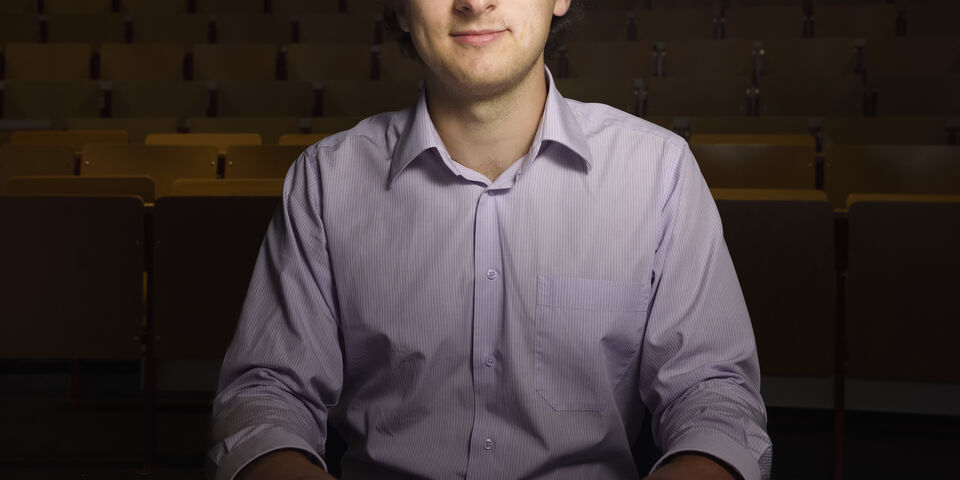Home Stretch | Energy-efficient screens
Two years ago Mikhail Astafev moved from Siberia to Eindhoven to obtain a Professional Doctorate in Engineering (PDEng). The Russian researcher carried out his graduation traineeship at Color CNTRL Research, where he came up with a solution to make reflective screens more energy-efficient. Meanwhile he and his band Angy-Near also released an album.
For Mikhail ‘Mike’ Astafev the Eindhoven Designer program was an ideal way to make the switch to the (Dutch) business community, he says. In the Siberian city of Novosibirsk he had started a doctorate track after a study of plasma physics. However, when he noticed after a year that his development stagnated, the ambitious Russian decided to leave for Eindhoven. “A friend here had already started as PDEng trainee, and it sounded like the right thing for me too.”
Here he followed the Design and Technology of Instrumentation program, a 4TU program coordinated from the TU/e Department of Applied Physics leading to a Professional Doctorate in Engineering (PDEng). The two-year PDEng program is comprised of two short traineeships and one long graduation traineeship, as Astafev explains. “The first one took place at NXP Semiconductors, the second one in Switzerland, at the start-up Femtoprint.” His one-year final project was done closer to home again, at the Eindhoven research department of start-up Color CNTRL.
That young enterprise develops so-called reflective screens - the technology that is also used in e-readers “The screens of Color CNTRL switch much faster than today’s e-readers, though, and besides they are in color.” The functioning is based on special inks with nanoparticles, in the colors yellow, cyan and magenta. They are enclosed in minuscule compartments (the pixels). By means of electric tension the ink particles are assembled or, conversely, homogeneously divided in the pixel. In this way the relevant color can be made visible or practically invisible. With three layers of these pixels you can thus build up a color display.
“In e-readers only the loading of the page costs energy”, Astafev explains. “That loading process is slow, but because the ink simply stays in its place when you switch off the tension, such reflective screens consume at least ten times less energy than LCD screens.” At present they are working hard at Color CNTRL on the required picture stability; as the screens had to be refreshed relatively frequently, the energy gain remained limited. That is why the enterprise assigned the Russian the task to find out how that stability of the ink could be improved.
He tried as many as ten solutions, says Astafev, of which one actually yielded a result. “That made my clients very happy indeed.” What exactly that solution is, he is not at liberty to say - the companies participating in the PDEng program are entitled to confidentiality of company-sensitive information. “Sometimes it is difficult to keep mum about this – I did not learn that at university – but I’m getting used to it”, he laughs.
The time that Astafev did not spend with one of the companies where he did his traineeship, he and his fellow trainees - mostly ‘internationals’ like him – spent in their common room on the ground floor of Flux. “I was lucky in that I was part of a congenial generation”, Astafev explains in fluent English. “We have done a so many things together.” He even drummed in a rock band, Angy-Near, with two Russian colleagues, with which band he also recorded an album.


Discussion